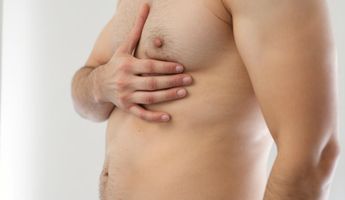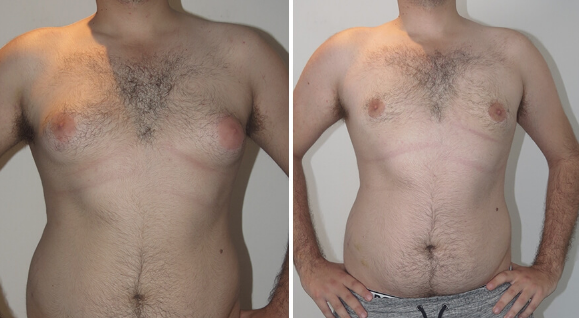Male Breast Reduction in Bahamas
Search and Compare the Best Clinics and Doctors at the Lowest Prices for Male Breast Reduction in Bahamas

Find the best clinics for Male Breast Reduction in Bahamas
No clinics available
India offers the best prices Worldwide
Price: $ 692

- Home
- Bahamas
WHY US?
At Medijump, we're making medical easy. You can search, compare, discuss, and book your medical all in one place. We open the door to the best medical providers worldwide, saving you time and energy along the way, and it's all for FREE, no hidden fees, and no price markups guaranteed. So what are you waiting for?

Free

Best Price

Widest Selection

Risk-Free
What you need to know about Male Breast Reduction in Bahamas

Male breast reduction, also known as gynecomastia correction, is a surgical procedure to treat overdeveloped male breasts or gynecomastia – a condition in which male breasts are enlarged due to imbalance of the hormones estrogen and testosterone. The procedure is usually performed on men whose physical health is affected by the condition or men who feel uncomfortable or self-conscious about their chest. The ideal candidates for this procedure are healthy men with skin that is elastic to adjust to breast reduction.
What Does the Procedure Involve?
Male breast reduction is carried out under general anesthetic or local anesthetic with sedation. The procedure starts by making an incision around the nipple to remove fat as well as glandular tissue from the breast, as well as some excess skin. In some cases, your surgeon may also perform liposuction in conjunction with the procedure to remove fat. The final step of the procedure is closing the incisions with stitches.
How Long Should I Stay in Bahamas for a Male Breast Reduction Procedure?
The procedure is usually performed on an outpatient basis, meaning you can leave the hospital on the same day of the surgery. However, you should not leave Bahamas immediately to allow your body to recover and attend follow-up hospital checkups. Plan to stay in the country for at least 5 to 10 more days.
What's the Recovery Time for Male Breast Reduction Procedures in Bahamas?
The total recovery period until you can go back to your full routine can take around a month. However, some people whose jobs are not physically demanding are able to return to work as well as some of their activities in 1-2 weeks.
What sort of Aftercare is Required for Male Breast Reduction Procedures in Bahamas?
Your surgeon will give you detailed instructions on how to care for your surgical wounds as well as diet and exercise to avoid complications. You may need to wear a pressure garment during your recovery period to reduce bruising and swelling. To maintain the result of your surgery, make sure to maintain a healthy weight by making some healthy lifestyle changes.
What's the Success Rate of Male Breast Reduction Procedures in Bahamas?
The procedure is generally safe and highly successful. However, just like other types of surgery, it carries some degree of side effects and risks that you need to be aware of. The side effects and risks include skin injury, noticeable scar, permanent pigment changes in the breast, slightly mismatched nipples or breasts, loss of breast sensation, numbness, and excessive bleeding.
Are there Alternatives to Male Breast Reduction Procedures in Bahamas?
Male breast reduction is currently the most effective treatment to reduce enlarged male breasts. If you do not want to undergo surgery, you need to consult with your doctor about what your best options are. In some cases, your doctor may recommend liposuction to remove excess fat from your breasts, but leaving breast gland tissue intact.
What Should You Expect Before and After the Procedure
Before male breast reduction, your enlarged breast may affect you physically or you may feel very self-conscious. After the procedure, your self-esteem and self-confidence may increase significantly and any physical problems you experience before the procedure should be gone.
Whilst the information presented here has been accurately sourced and verified by a medical professional for its accuracy, it is still advised to consult with your doctor before pursuing a medical treatment at one of the listed medical providers
No Time?
Tell us what you're looking for and we'll reachout to the top clinics all at once
Enquire Now

Popular Procedures in Bahamas
Price on Request

Prices Start From $2

Prices Start From $556

Prices Start From $2,473

Recommended Medical Centers in Bahamas for procedures similar to Male Breast Reduction

- Interpreter services
- Translation service
- Religious facilities
- Medical records transfer
- Medical travel insurance
- Health insurance coordination
- TV in the room
- Safe in the room
- Phone in the room
- Private rooms for patients available
Male Breast Reduction in and around Bahamas
The Bahamas is an archipelago and country on the northwestern edge of the West Indies. Having more than 700 beautiful, palm-fringed islands, this country is known for its stunning beaches, coral reefs, crystal clear waters, a myriad of bird species, and historic towns. With everything that it has to offer, it is easy to see why the Bahamas welcomes millions of visitors each year. Besides honeymooners, divers, and beach-goers, the Bahamas is also popular among medical tourists thanks to its exceptionally high-quality services. The country’s booming medical tourism industry is driven by its highly-skilled medical professionals and state-of-the-art equipment, combined with cost-effective medical care and the opportunity to recuperate in beautiful surroundings. Cosmetic and plastic surgeries, total knee replacements, and cardiac surgeries are some of the most popular procedures in the Bahamas.
Popular Parts of the Bahamas
Nassau, the capital of the Bahamas, is one of the chief pleasure resorts in the world. Known as the Bahamas’ crown jewel, it boasts a vibrant culture, breathtaking natural landscape, and rich history. Its signature attraction is the beaches, and the most popular is Cable Beach. With striking white sands and blue waters, this peaceful and beautiful beach is the perfect place to relax and sunbathe. Freeport is also a famous destination in the Bahamas. With its diving sites and world-class restaurants, there are many things to see and do in this city. The main draw of Freeport is its beaches. Some of the most popular are Taino and Fortune Beach.
Weather and Climate in the Bahamas
The Bahamas experiences a tropical climate and the average temperatures will stay the same all year round, between 24°C - 29°C. There are generally two seasons in the country: dry and wet. The dry season, from November to June, is mostly sunny and pleasant. However, it tends to be very crowded during this season, especially from mid-December to mid-April. The wet season spans from July to November. This season sees an increase in rainfall, but there are still many sunny days. The Bahamas also has a hurricane season, which lasts from June to November.
Getting around in the Bahamas
The largest international gateway to the Bahamas is Lynden Pindling International Airport, which is located near the capital city of Nassau, in western New Providence Island. It serves flights to numerous major cities in the Americas and Europe, including New York, Atlanta, and London. The easiest and quickest way to get around is by plane, especially to travel from one island to another. In Nassau and Freeport, the main transport option is the jitneys (private minibusses). In Out Islands, no public transport is available. The best way to get around inside the islands is by taxis or rental cars. However, taxis are often quicker and easier than driving on your own. Ferries and water taxis are all available.
Tourist Visas in the Bahamas
Citizens of 120 countries, including all EU countries, Australia, Canada, China, the US, and the UK, can visit and stay in the Bahamas for up to 3 months without a visa unless stated otherwise. Nationals not listed in the visa-exempt agreement need to obtain a visa to be able to visit the Bahamas.
Additional Information
- Local Currency: The Bahamian dollar (BSD) is the official currency, which is equivalent in value to the US dollar. Bahamian dollar and US dollars are accepted interchangeably in the country.
- Money & Payments: ATMs are widely available on the major islands and can usually be found in airport terminals and at banks. Credit cards are widely accepted. Tipping is expected, usually around 15% for taxi drivers and waiters, and $1-$3 for bag porters and hotel maids.
- Local Language: English is the official language in the Bahamas.
- Local Culture and Religion: Bahamians are deeply religious and the biggest religion is Christianity. However, the constitution guarantees freedom of expression, and other religions are freely practiced.
- Public holidays: Some of the most important holidays in the Bahamas are Whit Monday, National Heroes Day, Randol Fawkes Labour Day, Emancipation Day, Independence Day, Christmas Day, Boxing Day, New Year’s Day, and Majority Rule Day.
Popular Searches
- Plastic Surgery in Thailand
- Dental Implants in Thailand
- Hair Transplant in Thailand
- Breast Augmentation Thailand
- Gastric Sleeve in Thailand
- Gender Reassignment Surgery in Thailand
- Laser Hair Removal in Bangkok
- Botox in Bangkok
- Dermatology in Bangkok
- Breast Augmentation in Bangkok
- Coolsculpting in Bangkok
- Veneers in Turkey
- Hair Transplant in Turkey
- Rhinoplasty in Turkey
- Stem Cell Therapy in Mexico
- Rhinoplasty in Mexico
- Liposuction in Mexico
- Coolsculpting in Tijuana
- Rhinoplasty in Korea
- Scar Removal in Korea
- Gastric Sleeve in Turkey
- Bone Marrow Transplant in India
- Invisalign in Malaysia
- Plastic Surgery in the Dominican Republic
- Tummy Tuck in the Dominican Republic
- Plastic and Cosmetic Surgery in Poland
- Rhinoplasty in Poland
- Hair Implant in Poland
- Dental Implants in Poland
- IVF in Turkey